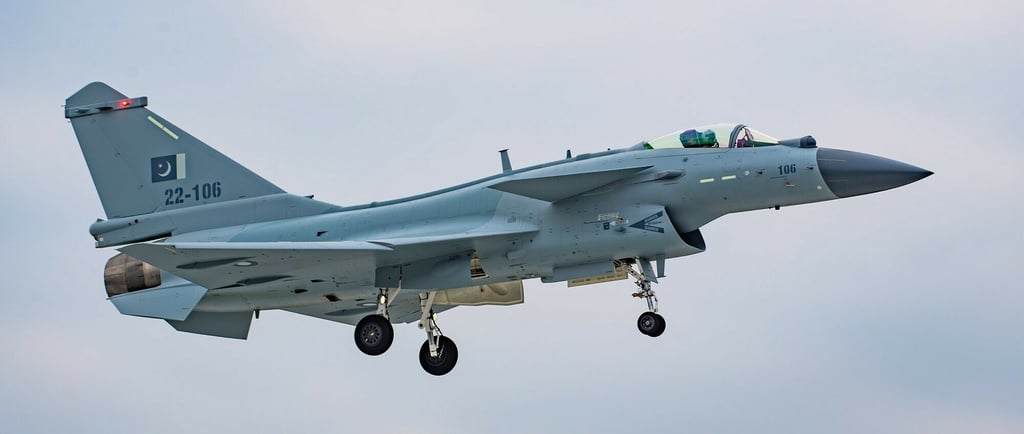Pakistan Shoots Down Indian Rafale with Chinese J‑10C & PL‑15 Missile — August 2025 Strategic Clash
Pakistan downs Indian Rafale jet using Chinese J‑10C fighter and PL‑15 missile on 2 August 2025, signaling a strategic shift in regional air power dynamics.
Raja Awais Ali
8/2/20252 min read


Pakistan Shoots Down Indian Rafale with Chinese J‑10C & PL‑15 Missile — 2 August 2025 Aerial Clash
On August 2, 2025, Pakistan’s Ministry of Defence confirmed that the Pakistan Air Force (PAF) had shot down an Indian Rafale fighter jet using a Chinese-supplied J‑10C aircraft armed with a PL‑15 long-range missile. This event occurred during a skirmish in early May 2025 along the Line of Control (LoC) and marks a historic first: a Western-built Rafale being taken down by Chinese technology in a real combat scenario.
The engagement reportedly involved over 110 combat aircraft from both sides. Pakistan's integrated air defense network played a critical role, utilizing ground-based radar systems and airborne platforms connected through the Chinese Data Link-17. This high-tech communication system enabled seamless sensor fusion and real-time targeting, giving the Pakistani J‑10C pilots a strategic edge.
In the strike, the J‑10C launched PL‑15 missiles from a distance exceeding 200 km—beyond the detection and engagement range of India’s Rafale fleet. The Indian Air Force (IAF) jets were reportedly caught off guard, failing to respond effectively due to shortcomings in electronic warfare and situational awareness. U.S. defense officials cited by Reuters also confirmed that the operation was conducted exclusively using Chinese systems—no American-made F‑16s were involved.
This incident signals a new era in Pakistan-China military cooperation. The lethal pairing of the J‑10C platform and PL‑15 missiles has proven effective in operational settings, showcasing China’s expanding role in high-end defense technologies. The success of this mission is seen as a major validation of Chinese combat systems in direct competition with Western platforms.
Indian defense analysts now face serious questions about their reliance on the French Rafale, especially in light of its apparent vulnerabilities against coordinated, long-range, networked attacks. Pakistani officials claim to have downed up to five Indian aircraft in total during the exchange, with confirmed debris of at least one Rafale recovered within Pakistani territory. India has not publicly acknowledged the loss, further fueling speculation and tension in the region.
The geopolitical implications are significant. The incident highlights how emerging defense partnerships and high-tech interoperability are redefining military balance. Countries like Indonesia, which were previously leaning toward French fighters, are reportedly reassessing their procurement plans in light of this high-profile success for Chinese systems.
Additionally, this marks a turning point where strategic advantage is not solely determined by hardware but by systems integration, missile reach, and data-driven command structures. It reflects how modern air combat now favors nations with holistic, tech-forward doctrines.
As both countries urge diplomatic calm, global defense watchers warn that this clash could accelerate a regional arms race. Training doctrines, procurement choices, and electronic warfare strategies may shift on both sides in response to this dramatic encounter.
For Pakistan, this moment reinforces the credibility of its growing alliance with China. For India, it raises urgent questions about its future air dominance strategy. And for the broader region, the incident reflects a fast-evolving era in aerial warfare—where integration, not origin, of systems decides the outcome.